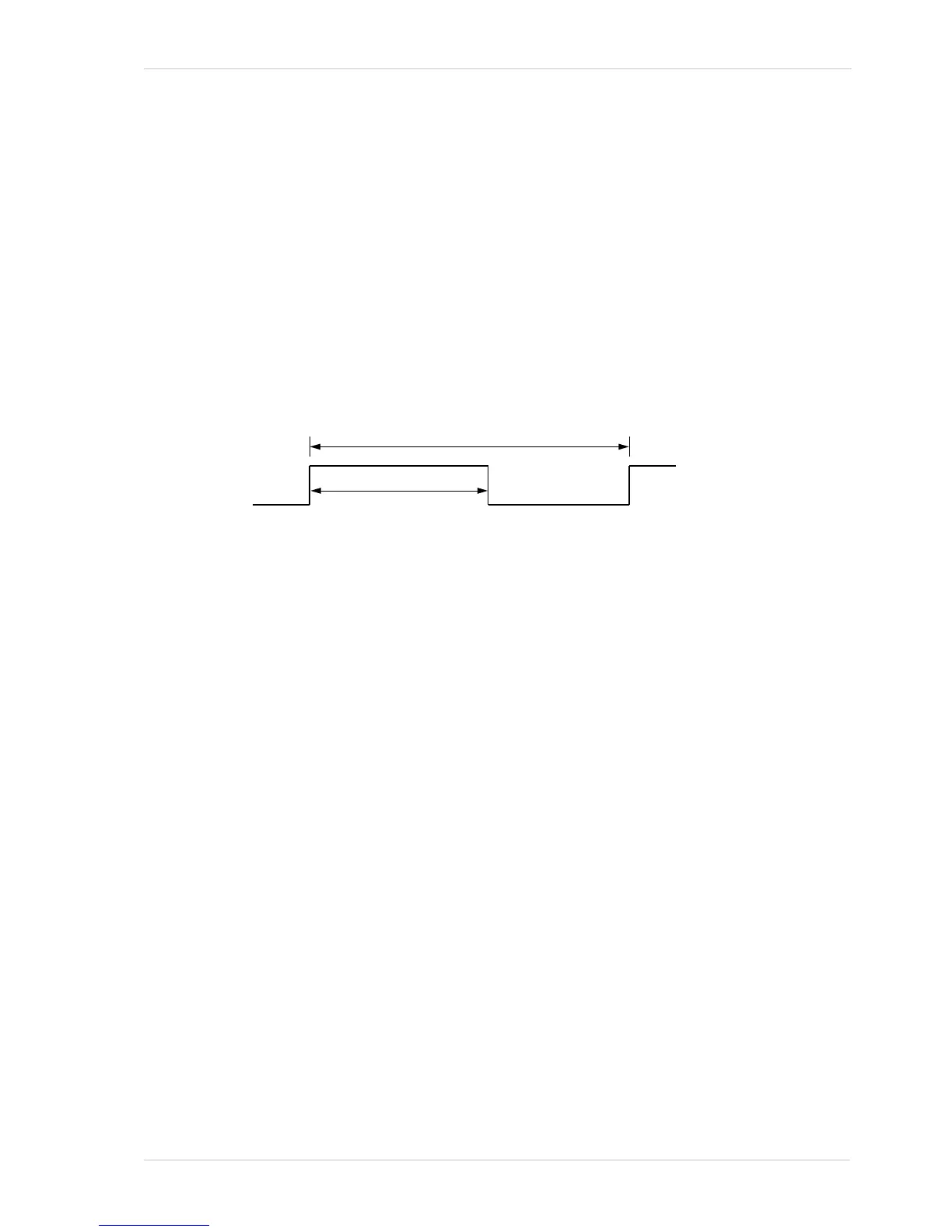AW00011916000 Image Acquisition Control
Basler scout GigE 137
For more information about the Acquisition Start Overtrigger event, see Section 12.15 on page 310.
For more information about the camera’s exposure time parameters, see Section 9.7 on page 141.
Trigger Width Exposure Mode
When trigger width exposure mode is selected, the length of the exposure for each frame
acquisition will be directly controlled by the ExASTrig signal. If the camera is set for rising edge
triggering, the exposure time begins when the ExASTrig signal rises and continues until the
ExASTrig signal falls. If the camera is set for falling edge triggering, the exposure time begins when
the ExASTrig signal falls and continues until the ExASTrig signal rises. The following figure
illustrates trigger width exposure with the camera set for rising edge triggering.
Trigger width exposure is especially useful if you intend to vary the length of the exposure time for
each captured frame.
Fig. 54: Trigger Width Exposure with Rising Edge Triggering
When you operate the camera in trigger width exposure mode, you must use the camera’s
exposure time parameters to set an exposure time. This parameter setting will be used by the
camera to operate the Trigger Ready signal.
You should adjust the exposure setting to represent the shortest exposure time you intend to use.
For example, assume that you will be using trigger width exposure and that you intend to use the
ExASTrig signal to vary the exposure time in a range from 3000 µs to 5500 µs. In this case you
would use the exposure setting to set the exposure time to 3000 µs.
If you are using the trigger width exposure mode and the camera is operating with overlapped
exposures, there is something you must keep in mind. If the action of the ExASTrig signal would
end the current exposure while readout of the previously acquired image is still taking place, the
camera will automatically continue the exposure until readout of the previous image is complete.
This situation is illustrated in Figure 55 for rising edge operation. On the first cycle of the ExASTrig
signal shown in the figure, the signal rises and falls while readout is taking place. Normally you
would expect exposure to take place only when the ExASTrig signal is high. But since the signal
falls while the previous frame is still reading out, the camera automatically extends exposure until
the readout is complete. On the second cycle of the ExASTrig signal shown in the figure, the signal
rises during previous frame readout, but falls after the readout is complete. This is a normal situation
and exposure would be determined by the high time of the ExASTrig signal as you would expect.
